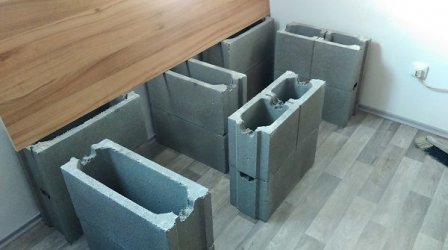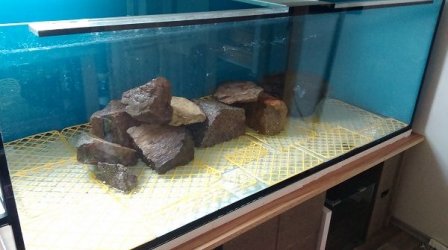ricbea said:
Hi All,
Byron you mentioned in a previous post the "silent cycle", i have done some reading on that this evening after work. Am i to understand correctly that I can put fish into the tank without having run a cycle? This may seem like a ridiculous question but I really do not want to mess this up! The reason I ask this is that all posts i see say don't run a fish-in cycle but rather go for a fish less cycle.
Tomorrow i am going to a shop that sells Valliseria and will be (hopefully) be returning with some to put into the tank. I added the Easy start yesterday evening ~24 hours ago and have an ample supply so following instructions on the bottle I will continue to add as required.
This really is a very exciting time for my 6 year old ("ahem" and me) and of course if i can go a quicker and safe way to adding my desired fish to the tank then I would of course love to take that route.
Richard.
The idea behind what is now being termed "silent cycle" is that the aquarist does not do any deliberate "cycle" but rather allows the nitrifying bacteria to establish naturally. However, this takes anywhere from 2 to 8 weeks normally, and is driven by the amount of ammonia added to the system. With the silent cycle, live plants are used to take up the ammonia/ammonium from the fish. There are some essentials that must be followed. To begin with, there must be a reasonably good growth of live plants, and some of these must be fast growing species. Floating plants are ideal here, as being at the surface they have good light, and can assimilate CO2 from the air (what we term the aerial advantage), since CO2 is likely to be more plentiful in the air compared to the CO2 that may be in the water. It also takes four times longer for submersed plants to take up CO2 from the water as it does emersed from the air. Floating plants are naturally fast-growing plants because of these advantages (light and CO2). Stem plants are fast growers, but here they may take longer to settle down and they depend upon CO2 in the water, and sufficient light has to reach them. Vallisneria is a fast-growing plant, as are Amazon swords, and there are some others; but again, you need to make sure the plants are settled and have started growing. Light and other nutrients also impact submersed plant growth.
Once you have the plants established, you can add fish. It is best to start small, much as you would once a tank is "cycled" by the fishless method, and for the same reason. You don't want to overwhelm the system with ammonia. The ammonia produced by the first fish will be taken up by the plants. Studies have shown that plant uptake of ammonia/ammonium is faster than the uptake by
Nitrosomonas bacteria. The latter will still establish, but generally slower that they would without the plants.
Plants, like all animals, need nitrogen which is a macronutrient, and most aquatic plants prefer nitrogen in the form of ammonium. The ammonia produced by fish respiration and the breakdown of organics is released into the water; it can be present in one or both of two forms, ammonia (NH3) or ammonium (NH4). Ammonia and ammonium exist in equilibrium, but the pH determines which will predominate; in acidic water, ammonium predominates, whereas in basic pH water it is reversed. Plants take up either, and when it is primarily ammonia, this diffuses across the cell membrane and combines with a hydrogen ion (H+) to convert to ammonium. Ammonia is also combined with stored carbohydrates to form amino acids used to synthesize proteins. Aquatic plants actually take up a great deal of ammonia/ammonium. Provided the fish load is not too great to start with, there will be no detrimental effect on the fish. Our hobby test kits for ammonia will not show ammonia above zero throughout.
Another benefit to this process is that unlike the nitrifying bacteria cycling, with live plants there is no nitrite produced, so that aspect of cycling is simply non-existant. Nitrate is also absent, though this will or may appear in time as the nitrifying bacteria do establish. There is really nothing to take this up, though this can occur by de-nitrification primarily in the substrate but also the filter. There are also some bacteria in the substrate that use nitrate and produce oxygen. Planted tanks using the low-tech or natural method should have very low nitrate, sometimes even zero using our test kits.
The nitrifying bacteria will still establish, this is natural in any body of water. But you will not be able to detect it, and more to the point, neither will the fish. Provided the plants are sufficient and the fish load is initially small, there is no better method of cycling new tanks.
In your situation, Vallisneria will certainly help in "cycling." Depending upon how many fish you introduce and how rapidly, a good stand of Vallisneria might handle everything. But I would use a bacterial supplement here, just as a sort of failsafe. I've done this myself whenever I have set up a new tank with perhaps not that many plants, or a lot of fish. In 15+ years I have never had cycling issues when using the live plant method, and I always have the water surface covered with floating plants.
Ask if anything is unclear.
Byron.










